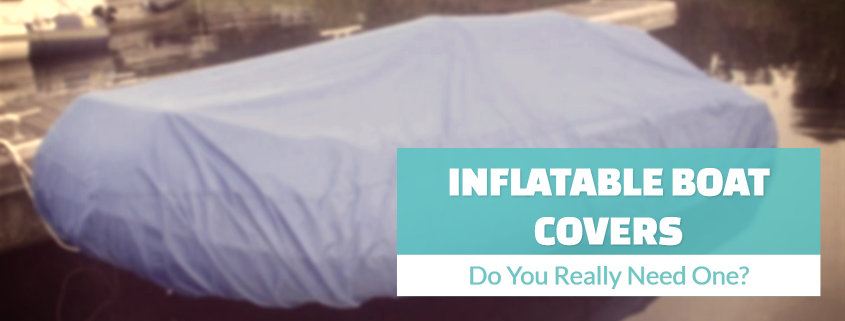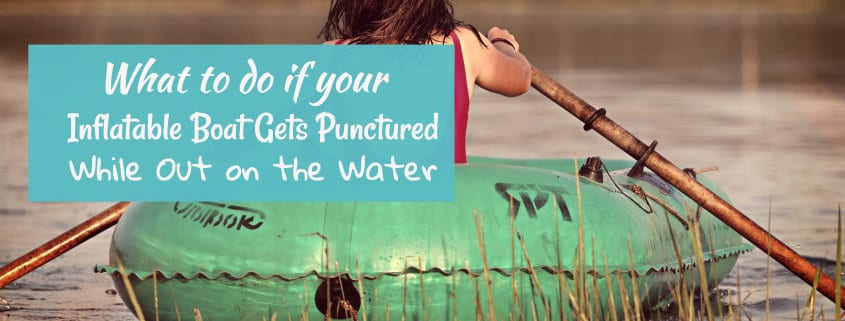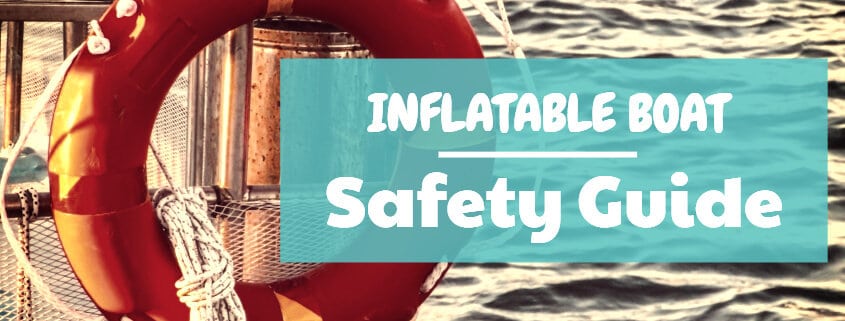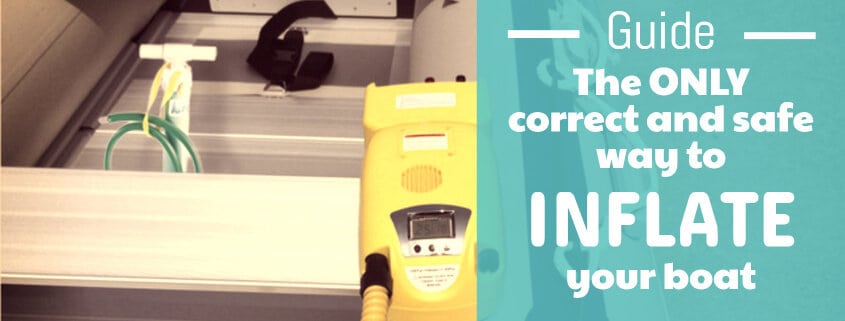Buying an inflatable dinghy is your first step to having loads of fun on the water. However, the purchase represents an investment, and as such, protecting it with an inflatable boat cover when you’re not using it is a good idea.
Contents
How can an inflatable boat be damaged when not in use?
Rocks and branches in the water are generally not the biggest enemies of inflatable watercraft.
Nature is.
Inflatables are vulnerable to the wear and tear that nature and our environment can cause:
- UV rays when left out in the sun.
- Bad weather conditions like rain and snow.
- Pollutants in the air.
- Things that might collect on/in the boat like bird poo, leaves, flying sharks, etc.
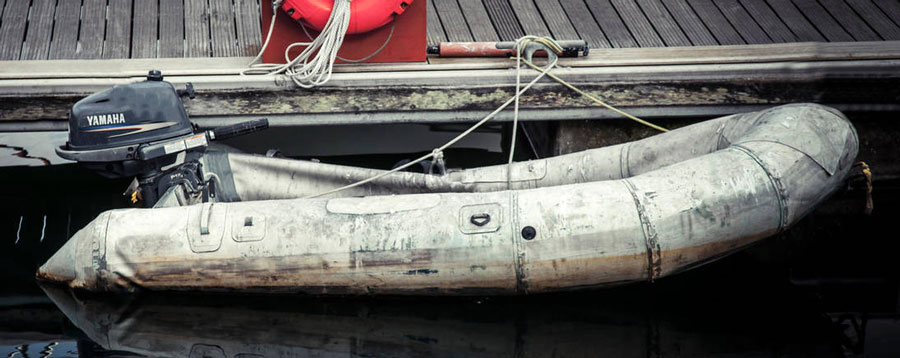
Do you need a cover for an inflatable boat?
Although inflatable boats are durable, we must protect them from nature’s ravages. If you plan on leaving your inflatable boat outside while not in use, you should buy a cover to shield it from the elements.
Even though the best inflatable boats are made with high-quality materials, they do not resist the wear and tear of UV rays like fiberglass. An inflatable boat cover will protect your inflatable boat from the sun, as it prevents UV rays from damaging it.
Without a cover, a PVC inflatable boat left out in the sun will degrade very quickly. The lifespan of a SIB that is well cared for is 10-20 years, but if you leave it out in the sun, it will start falling apart in 2 years.
Synthetic rubber boats (like Hypalon) are more resistant to UV rays, but they are also more expensive. You should cover Hypalon boats as well when not in use.
If you plan on taking your inflatable boat on a trailer, getting a cover is a wise choice. You will protect the boat’s material and anything you put inside of it while on the road.
What to consider when buying an inflatable boat cover
Choosing a cover for an inflatable boat is different than for a traditional fiberglass boat. It is not as complex as choosing a boat, but there are several things you need to know about boat covers beforehand.
Types of dinghy covers
You can use several types of covers to protect your boat, depending on what kind of boat you have.
All of them are inexpensive, easy to put on, take off, and store.
I will list each type of cover, just so you are familiar with all of them.
Inflatable boat cover: These covers are ideal for inflatable boats and dinghies. They are easy to use and secure since you can put them on and take them off in just a few minutes.
Using either integrated elastics or drawstrings and straps, you can secure the cover tightly.
Pro tip: Trailing covers will collect rainwater in the center. This is called pooling. If you’re leaving it on for a long time, it’s a good idea to place a support pole or something similar in the middle of the boat that elevates the cover center, allowing the water to flow off.

Trailerable cover: As the name suggests, a trailing cover, also known as towing cover, can be used while you are towing your boat on a trailer. It will keep all your accessories safe inside the boat, and won’t flap around if you get the right size.
How fast can you go with a trailerable boat cover?
The maxium speed you can go with varies from cover to cover, but is around 40 MPH (65 km/h) in general.
Flat cover: This type of cover is used on sailboats. It has openings for the shrouds, mast, and forestay. Its design incorporates a tie-down on the main halyard, which prevents water from collecting.
Overboom cover: This type of cover is intended for sailboats and should be used when you will leave the boat somewhere for the winter. Overboom covers have a unique design that incorporates an opening for the mast and is shaped to cover the boom completely.
Under cover: As the name suggests, these covers are ideal for protecting the boat’s underside when it is being moved on a trailer. Generally, they are made of durable materials such as nylon and have straps and cords to secure them to prevent damage during the trip.
Inflatable boat cover materials
Acrylic: When it comes to boat covers, acrylic is considered one of the best:
- They are breathable, which reduces the humidity and mildew that may occur under the cover.
- They are resistant to ultraviolet rays and will retain their shape.
- Another positive aspect of this material is that you can choose from a wide range of colors.
- Acrylic boat covers have a longer warranty.
On the negative side, though, they have less resistance to wear and tear, and you need to waterproof them every 1-2 years.
Polycotton: Boat covers made out of polycotton are a great option as well. The material is a blend of cotton amd polyester, which effectively combines the strenth of polyester with the breathability of cotton.
- When the material comes into contact with water, the cotton fibers swell, making them more waterproof.
- As the material dries, the cotton fibers shrink. This lets any moisture trapped under the cover out as well.
Polycotton is heavier and more expensive that other materials, but it is a great choice.
Polyester: These covers are coated with PVC or vinyl, making them much more durable against nasty weather. Also, polyester covers are flexible, do not shrink, and are very easy to handle and wash.
Their disadvantage is that when it rains or it is cold, the vinyl coating tends to wrinkle. This makes the cover look very messy. But if this doesn’t bother you, polyester is a good choice.
Nylon: Covers made out of nylon are the cheapest option. While they will protect your boat from debris, their problem is that the material is not highly resistant to ultraviolet rays.
In general, nylon covers have a much shorter lifespan than other types of more potent and more durable materials.
If you need to use the cover to protect against strong UV, I do not recommend getting a nylon cover. You will end up replacing it in 2 years.
Breathable vs. non-breathable boat covers
Breathable: Breathable boat cover materials like acrylic are perfect if you want to keep humidity away from your boat.
Breathable covers inhibit molding underneath them because they allow moisture to escape. As you know, this is important for inflatable boats.
They are commonly used on older boats with wooden hulls as well.
Non-breathable: Non-breathable boat covers like PVC-covered polyester are highly resistant to harsh weather conditions. They do not allow rain to enter the boat but do not allow air to circulate inside either. This might lead to molding under the cover.
Glued vs. sewn seams
Whether the cover is stitched or sewn will depend on what type of material it is made of.
Glued seams: Generally, PVC covers are glued, not stitched. They are much easier to repair, but glued seams will fail with exposure to the Sun’s UV rays.
Sewn seams: Acrylic and cotton seams are double-stitched, not glued. They are easy and flexible to work with and offer good resistance and strength. They have a cleaner appearance and can be restitched if they tear.
The disadvantage of this type of stitching is that it takes skill to fix; you can’t just use a thread and needle yourself.
Stretch cord vs. rope
How you attach a cover to your boat is significant in keeping the inside protected and not allowing the cover to fly off when used on a trailer.
Stretch covers: Stretch covers are sized and shaped for your boat. They provide a watertight seal and offer good protection. They are made of an elastic material that is easy to install and take off.
The problem with stretch covers is that the elastic tends to wear out, which causes it to lose its elasticity. This can loosen the cover to such an extent that you may need to replace the whole thing.
Rope fasteners: Covers that are fastened with a rope running around the material’s edge are a bit harder to use than stretch covers. However, they last longer since you can replace the rope if it tears.
The disadvantage of rope fasteners is that they are not 100% watertight, which means some water can get in. This might lead to mildew over time.
Extra features of inflatable boat covers
Support posts: These posts raise the center of trailing covers, effectively making water run off instead of collecting in the middle of the cover. You can buy a support post like this one, or just place something in the middle of your boat.
Mold protection: Mold is a big problem with boats. I would advise that you get a cover that is treated to protect it against mold. Keep in mind that even if you have this protection, it will diminish over time. You will probably need to apply some form of protection every 1-2 years.
Water resistance: You would think that all boat covers are water-resistant, but the low quality ones are not.
Stitched ventilation: Some boat covers have sewn-in vents that help circulate moist air out of the boat. This helps in keeping the internal surfaces dry. The openings of the vents face downward, so rainwater cannot get in.
Reinforced seams, corners, and edges: Putting a boat cover and taking it off a lot can degrade the integrity of the cover. This is most apparent along the seams and edges of the cover. The best covers are reinforced with multiple layers of fabric in these areas, increasing their overall lifespan.
Motor cover: Some covers are made larger in the back to fit an outboard motor. If you have a dinghy with an outboard, you can either find a cover that can fit the motor under it, or get a separate cover for your motor.
Console cover: If you have a RIB with a console, you will usually need to buy a cover that is 1 size larger than what would otherwise fit your boat based on it’s measurements.
Taking measurements for an inflatable boat cover
Boat covers come in many sizes, so you’ll need to choose one that will be just the right size for your boats.
Let’s look at how to measure your boat for a cover.
You will only need to take 2 measurements and know the hull style:
- The length of the boat in a straight line at its longest point
- The width of the boat at its widest point
- Specialized covers account for the hull style as well, so you’ll want to know the shape of your boat. While the bow of most inflatable boats and dinghies is similar, the aft is not. Dinghies, in particular, need an open stern cover that reaches out to cover the chambers behind the stern.
You will need to add to these measurements if you have anything protruding out from the body that will be covered.
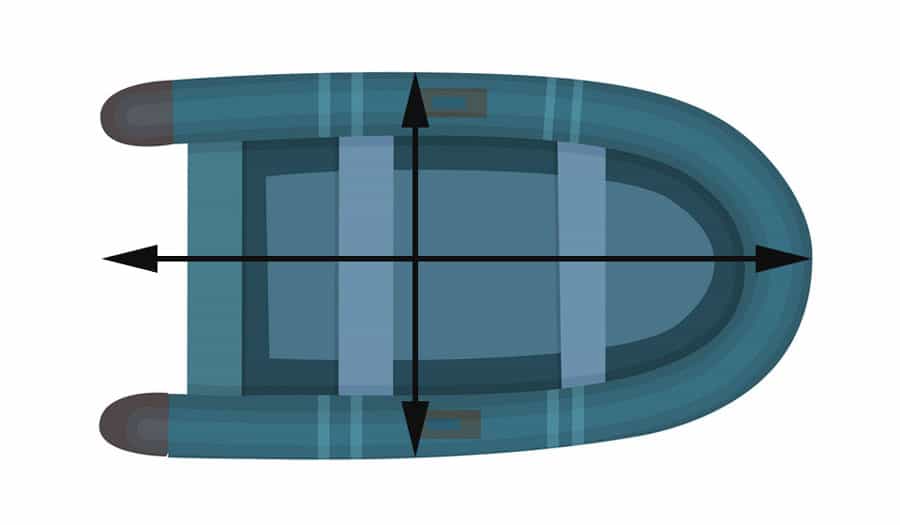
If the cover is too large, it will sag and billow in wind.
If the cover is too small, it will simply not fit, or overly stretch the fabric leading to reduced lifespan.
Taking care of your boat cover
Depending on what material your cover is made out of and what chemicals it has been treated with, you will need to occasionally retreat it with and or all of the following:
- UV protectant
- Mildew remover
- Waterproofer
Taking care of your cover will 3x its lifespan. Sooner or later, the cover will irrepearibly tear, but don’t let it be your fault.
How often do you need to reapply the chemicals depends on how quickly they degrade. For example, in the Florida sun, you might need to reapply the 303 UV protectant every 3-4 months.

